QuestionI have a 20 gal tall aquarium with 5 fish.
one goldfish and 4 brim. The brim were just recently added to the tank. What type of food do they regulary eat in the wild and how do I keep them alive?
Right now they seem to get along with the gold fish and prefere the dark(I reckond because they are wild caught), so I leave the light off at night and turn it on during the day. Is this what I should do?
I think the water quality is fine, I donot have a test kit to teel what the ph, ammonia and nitrite levels are right now. Do I need one? Please help me so I can keep them alive!!!
AnswerHi Dana;
If you maintain the tank once a week and avoid overfeeding and overcrowding you don't need to mess with test kits. All aquariums need a 25% water change once a week. Vacuum the gravel once every 2 to 4 weeks. If the tank is newly set up, such as it has had fish in it for less than 8 weeks, that is a different story. At the end of this letter I will include my article on new tanks just in case you need it.
Bluegill (aka sunfish or bream) are pretty, but those guys will become aggressive and pick on that goldfish or even try to eat him as they get bigger. Many keepers of bluegill feed goldfish to them intentionally as they get big enough. It really isn't necessary though. Besides, they get a better more balanced diet if you feed them a good quality cichlid pellet which is healthier, easier and more economical anyway.
In the size tank you have they may also pick on each other until only one is left. They need a very big tank if you want to keep more than one because of their adult size and moderately aggressive nature. They get 8 to 12 inches long or so. 70 gallons or larger with lots of caves to hide in would be the smallest for 3 or 4. They are not used to the tank yet so have not shown their true personalities, or they are just still young. The fact that they prefer the dark right now is a good indicator that they are still feeling scared. It would be best to find the bluegill another more suitable tank or you might want to at least give the goldfish his own tank so he will be okay.
Here are some sites to check out more about them and what they eat;
http://www.fishpondinfo.com/misc2.htm#sun
http://www.petfish.net/bluegill_aquarium.htm
http://fn.cfs.purdue.edu/anglingindiana/fishesofindiana/Sunfish/Bluegill.htm
**********
New Tank Syndrome or Break-in Period
So you have a new tank and you filled it up, put the filter together, mounted the heater into place and turned on the lights. You have all the plants and decorations where you want them....
You are ready for fish.
But, your filter is not ready for a full tank of fish yet.
The filter is running and moving the water and cleaning out crud, right? Of course!
But a very important part of your filter is the part you can't see. An aquarium filter removes the larger visible stuff, but it also must remove the dissolved fish waste that turns into ammonia in the water. To do this, special bacteria must grow in the filter system and on the particles of gravel in the bottom of your tank. This process occurs even on a limited scale in little fish bowls that have no filter in them.
This is "New-Tank Syndrome" or the "Break-in Period". The entire process takes 6 to 8 weeks to complete because these "nitrifying" bacteria grow quite slowly.
Start off with only one or two hardy fish (no more than 2 total inches of fish) for every ten gallons of water and don't add more until the 6 to 8 weeks has gone by. Hard to be patient, but it is worth it to keep your fish alive and healthy. As a matter of fact, the bacteria cannot develop without fish in the tank. You can let that tank sit forever without fish in it, but as soon as the first fish goes in the process begins. Avoid changing the filter pads during break-in. This removes the bacterial colonies that are essential to a balanced aquarium. You can rinse the filter pad out in a container of aquarium water. This will preserve most of the bacteria colonies while still allowing your filter to flow freely. Even using bacteria additives and water conditioners when you first set up the tank will not make a tank begin the cycle by itself. If there are no fish to provide food (fish waste) for the bacteria, the beneficial bacteria cultures will die and you will have to start the colonies all over again once fish are added to the tank. Once the tank has completed the initial cycle, you can change the filter pads every 4 weeks or so. But for now, just rinse them.
Feed your new fish VERY lightly. Any excess food will cause additional waste your system cannot afford to have right now. If you see food floating around or lying on the plants and gravel after five minutes, too much food is going into the tank. Cut back a little each time you feed until it is ALL gone 5 minutes after you feed them. Feed them once a day.
During this "break-in period" your tank will become cloudy and milky looking. You may have to tolerate this for the entire break-in period but it is only temporary. Changing 25% of the water three times a week until the break-in period is over helps a great deal. Changing water reduces the ammonia and nitrites that rise while the bacteria continues to multiply. If ammonia and/or nitrites become too high, your fish will become stressed and possibly die. Use a good water conditioner when you replace the water and make sure it is the right temperature to avoid shocking your fish.
When the break-in is over after 6 to 8 weeks and there are no nitrites or ammonia present in the water you can slowly add more fish. Add one or two every week until you reach the desired population. This allows the bacteria to adjust to the new population every time before adding more. Monitor the nitrites and ammonia to be sure they don't come up. If they do, make a 25% water change and check them again. Don't add the next fish until the levels are down again.
The safe maximum population for any size tank is one inch of adult fish for every gallon of water in the tank. Do some research to be sure of the fish you are interested in. Even though they are small when you buy them, you have to base your population calculations on full-sized adult fish. Many hobbyists have up to two inches per gallon but this can be risky. If a water quality issue arises or a disease occurs it will spread fast and furious in an over-populated tank. In any case, 25% water changes every week to two weeks are absolutely essential for the health of your fish.
Following these guidelines will help you get your new tank on the right track.
**********
At Your Service;
Chris Robbins
Come on over and join us on the freshwater fish forum at About.com to get even more information too;
http://freshaquarium.about.com/od/questionsanswers/a/naavigateforum.htm

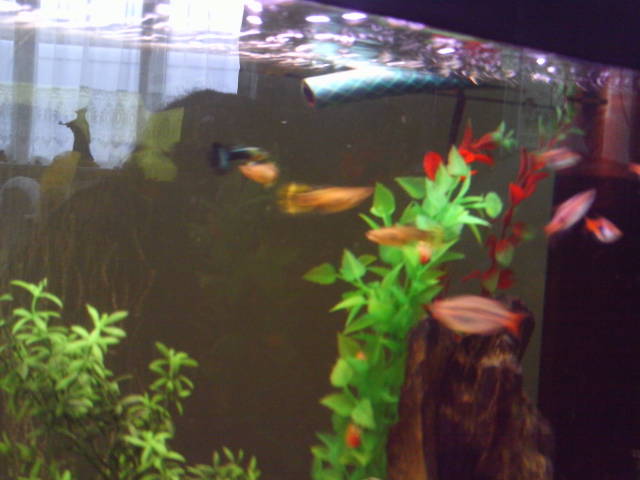 Guppies and Baby Mollies
Question
My Guppy
Hi,
I have a 3 ft by 1 ft ta
Guppies and Baby Mollies
Question
My Guppy
Hi,
I have a 3 ft by 1 ft ta
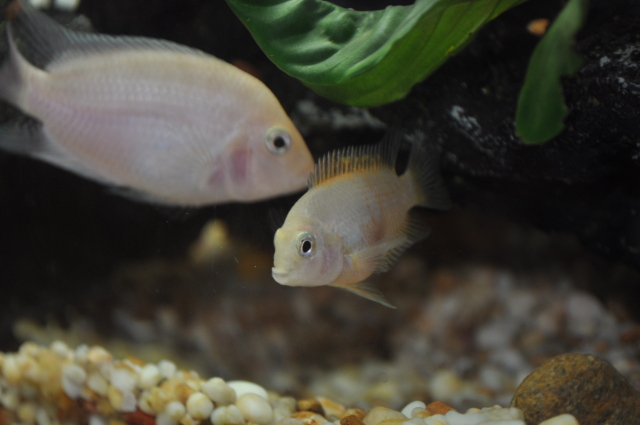 cichlids babies
Question
Cichlid Parents
Hello I am extremely excited a
cichlids babies
Question
Cichlid Parents
Hello I am extremely excited a
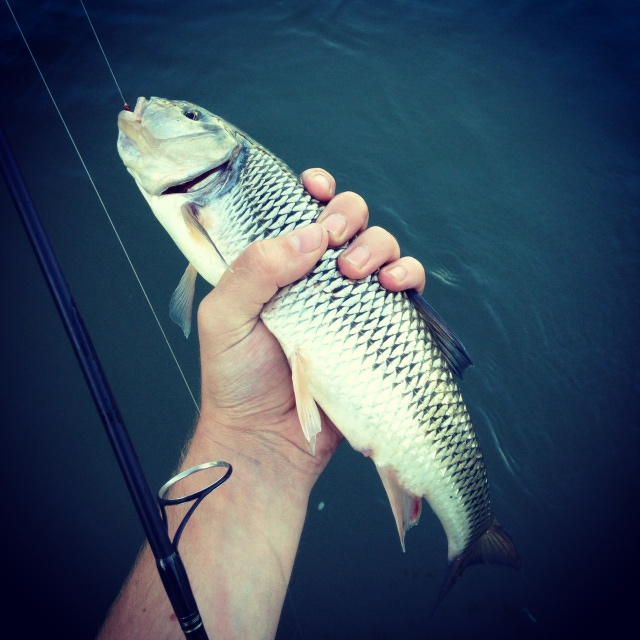 Cant figure out the fish I caught
Question
Photo 1 Photo 2
Hello,
All my y
Cant figure out the fish I caught
Question
Photo 1 Photo 2
Hello,
All my y
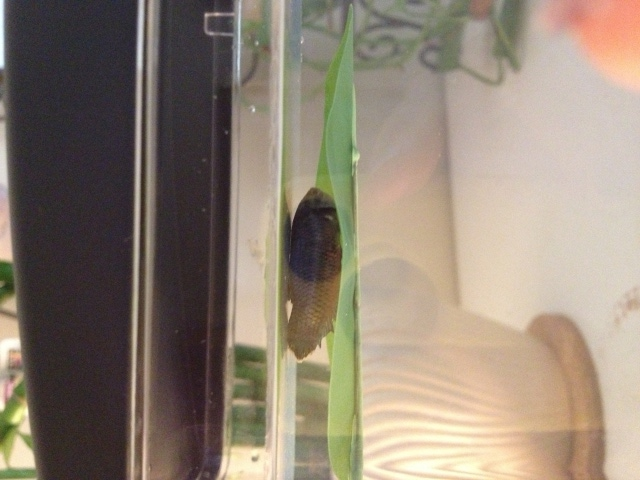 Bought Beta after had been in fight in store... Help!
Question
Nemo resting on his ha
Hello. I was in
Bought Beta after had been in fight in store... Help!
Question
Nemo resting on his ha
Hello. I was in
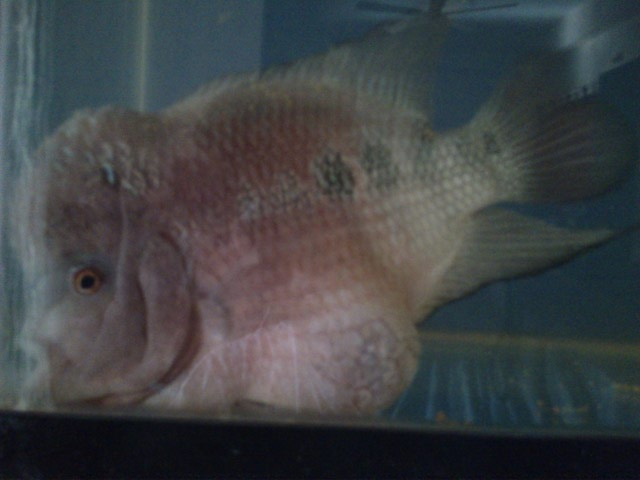 Dropsy, Bloated Stomach
Question
Flower Horn Flower Horn
Hello,
My
Dropsy, Bloated Stomach
Question
Flower Horn Flower Horn
Hello,
My